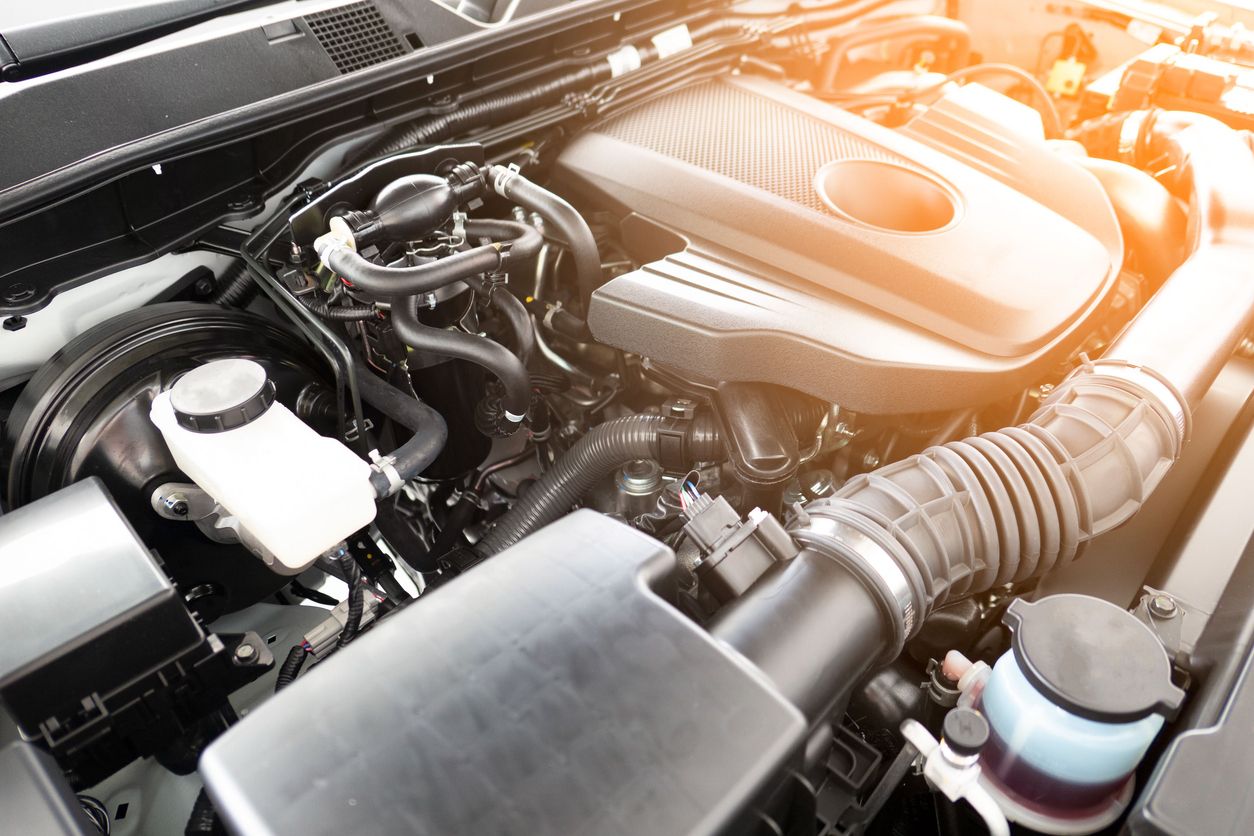How can you effortlessly maneuver thousands of pounds of steel simply by turning a steering wheel? Thank power steering.
Modern power steering came around in 1951 with the release of the Chrysler Imperial, which used hydraulic power to make driving easier. Today, many cars have switched to electric power steering.
But what's the difference between electric and hydraulic power steering? Keep reading to learn about the disadvantages and advantages of electric power steering compared to hydraulic and how to spot potential issues with your system.
What is Power Steering?
In simple terms, power steering reduces the effort required to turn the steering wheel in a vehicle. Without the electric or hydraulic assist from the power steering system, the steering wheel would feel heavy and difficult to turn. If you’ve ever had the power steering go out in your vehicle, you’ll know that cornering, parking, and maneuvering your car — especially at low speeds — suddenly becomes a full upper body workout.
Hydraulic vs. Electric Power Steering
There are three types of power steering found on today’s vehicles: electric, hydraulic, and a hybrid hydroelectric system. Below, we'll discuss the difference between electric power steering and hydraulic power steering.
A fully electric power steering (EPS) system uses an electric motor — placed either on the steering rack or steering column — to assist the driver. Sensors attached to the motor measure how much torque, or rotational effort, the driver is applying to the steering wheel. The sensors then use that information to decide how much assistance the driver needs to turn the front wheels.
Speed is the greatest factor in determining how much assistance the EPS provides. You may notice that the steering wheel is very easy to turn at low speeds, such as during parking, to make maneuvering simpler. At higher speeds, more resistance from the steering wheel provides greater stability.
Hydraulic systems, however, use hydraulic fluid powered by a power steering pump to help drivers turn the wheel. While an EPS is powered by the car’s 12-volt (or higher) electrical system, the power steering pump is driven by the serpentine belt or another drive belt connected to the engine. The power steering pump uses power steering fluid to create hydraulic pressure on the steering gear or pinion that the driver must move to turn the wheels.
For a more in-depth look into steering systems, check out this article: How Does a Car's Steering System Work?
Advantages of Hydraulic Power Steering
Hydraulic power steering has been the dominant power steering system for over 50 years. Because of this tenure, it has benefited from decades of development and fine-tuning. Proponents of the hydraulic assist method highlight one major advantage: the ability to feel the road through the steering wheel.
More feedback from the road, or steering feel, creates a more seamless driving experience because the driver can better understand how the car is handling. In a way, the road communicates with the driver through the steering wheel, allowing for more intuitive decisions and overall safer driving. For this reason, many drivers of high-end sports cars and racing cars prefer hydraulic assist. It allows them to make faster, more informed decisions while driving at high speeds.
Disadvantages of Hydraulic Power Steering
Despite being used for so long, hydraulic power steering does come with a few drawbacks. First, hydraulic power requires the use of hydraulic fluid, also known as power steering fluid. Although not required by some vehicle manufacturers, power steering fluid can be replaced regularly — approximately every five years or 50,000 miles. Moreover, if this fluid leaks below a certain threshold at any point, you may lose power steering assistance.
Secondly, hydraulic power assist is “always on,” meaning the engine has to constantly work for the power steering assist to perform. Systems that require the engine’s mechanical energy to operate may impact fuel efficiency and gas mileage.
Lastly, hydraulic power steering systems are more complex and require more parts than an electric power steering system. In this way, they can take up more space in the engine bay.
Advantages of Electric Power Steering
Since the early 2000s, electric power steering has become the norm for most cars. This is primarily because an EPS system is generally simpler and easier to maintain than its hydraulic counterpart. Electric systems do not require power steering fluid to work and only draw power when needed, making them more fuel efficient than hydraulic systems.
What’s more, EPS enables the modern driver-assist features we’ve come to rely on, such as automatic parking and lane-keep assistance. It will also be essential as we move toward the future of self-driving cars.
Compared to hydraulic power steering, EPS compensates better for wheel misalignment and driving conditions that affect steering, such as high winds and uneven surfaces. And since the system is totally electronic, it’s easier to adjust the accuracy of the power assistance through simple software updates.
Disadvantages of Electric Power Steering
Even though electric power steering systems are now standard, they still have a couple of drawbacks. Unlike traditional hydraulic systems, earlier EPS systems initially lacked the steering feel, or feedback, from the road that helped inform drivers of how their car was handling. These days, manufacturers have largely corrected this issue, making the feel of electric vs. hydraulic power steering nearly indistinguishable.
Another disadvantage of electric power steering is that it cannot easily be fixed with standard parts and labor like a hydraulic system. EPS systems may require specialized equipment and knowledge to diagnose and repair electrical issues that may be caused by a faulty onboard computer or various sensors. As a result, repairs on electric power steering units usually cost more than repairing hydraulic units.
How to Spot Power Steering Problems
Since a driver’s hands are always on the wheel, power steering problems usually come to your attention quickly. If you notice any of the following symptoms, you may be dealing with a faulty power steering system or low power steering fluid:
- Poor vehicle responsiveness when steering
- Whining or groaning noises while steering. This may also indicate low fluid levels
- A stiff steering wheel that takes more effort than usual to turn
Now that you know the differences between hydraulic and electric power steering systems, the pros and cons of each, and how to recognize power steering problems, you also know that keeping your system properly maintained is vital. Stop by your nearest Firestone Complete Auto Care for steering and suspension services, complete vehicle inspections, and more.



